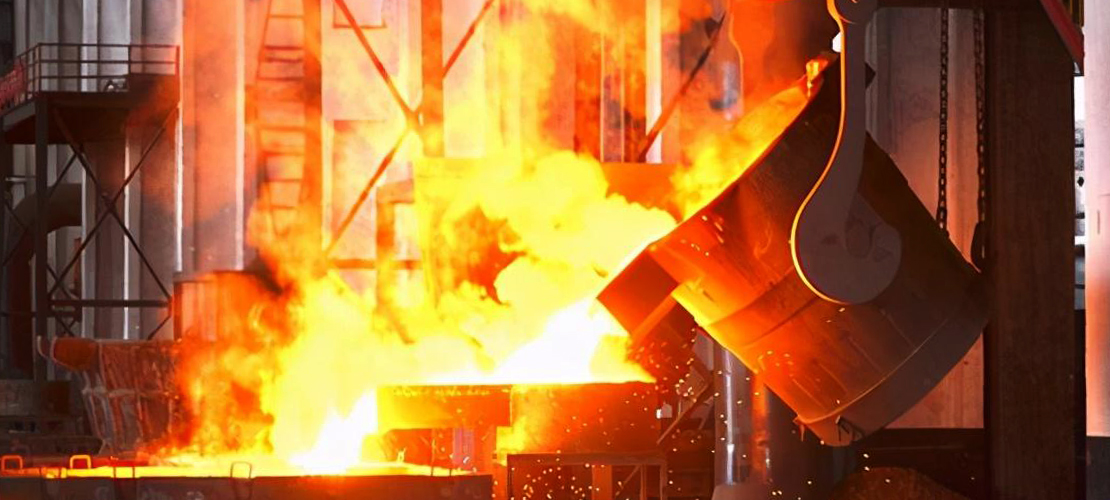Nov. 17, 2025

The silicon manganese furnace is mainly used for smelting ferrosilicon alloys. Its a commonly used composite deoxidizer in steelmaking and a reducing agent in the production of medium and low carbon ferromanganese and the electrosilicon thermal process for producing metallic manganese. Ferrosilicon alloys are composed of silicon, manganese, iron, and small amounts of carbon and other elements. They are produced in large quantities, ranking second in consumption among electric furnaces ferroalloy products, and have wide applications in the iron and steel smelting and power industries.
Ferrosilicon alloys can be smelted continuously in large, medium, and small submerged arc furnaces. Similar to high-carbon ferromanganese, coke is mainly used as a reducing agent in the production of ferrosilicon alloys. Different grades of ferrosilicon alloys require different quality manganese ore.
Ferrosilicon alloys are produced in submerged arc furnaces by simultaneously reducing manganese oxide and silicon dioxide in manganese ore (including rich manganese slag) and silica with carbon.
The hallmarks of a normal furnace condition in ferrosilicon alloy production are: stable operating current, full-load operation, balanced and deep electrode insertion, uniform electrode consumption rate, normal lowering (approximately 200mm lowering length per hour), easy opening and closing of the furnace borehole, smooth iron and slag tapping, high temperature, good slag-iron fluidity, and easy separation.
The alloy composition is stable, with the m(CaO+MgO)/m(SiO2) ratio in the slag between 0.7 and 0.8, and MnO below 10%. The furnace gas composition is normal: O2 less than 2%, H2 less than 8%, a slight negative pressure (-49Pa) inside the furnace, and a furnace temperature below 600℃.
Ferromanganese alloy smelting is primarily carried out in a semi-enclosed submerged arc furnaces. Current supplied by a 35kV power source is introduced into the furnace through electrodes. An electric arc is generated between the electrodes and the furnace charge, utilizing arc heat and resistance heat to heat the charge.
The silicon-manganese alloy furnace contains multiple structural zones, including a solid charge zone, a conical coke layer zone, a molten slag zone, and an alloy zone. The addition of reducing agent and the control of charge size significantly affect the rate of manganese reduction.
During the electric furnaces smelting process, silica is reduced to ferromanganese alloy. Additionally, low (medium) carbon ferromanganese slag can be added to a high-silicon manganese alloy furnace for smelting.
1. Raw Material Selection:
The raw materials for ferrosilicon alloy are high-purity silicon and manganese, with silicon purity required to be above 98% and manganese purity required to be above 96%. Selecting high-purity raw materials ensures excellent quality of the produced ferrosilicon alloy.
2. Smelting:
The selected silicon and manganese raw materials are mixed in a certain proportion and then placed in the furnace for smelting. The smelting temperature is generally above 1500 degrees Celsius, and the smelting time depends on the specifications of the smelting furnace and process requirements, generally lasting from several hours to tens of hours.
3. Casting:
After melting, the molten ferrosilicon manganese alloy is poured into a mold and solidified. Temperature and pressure must be carefully controlled during casting to ensure the quality of the formed alloy.
4. Quenching:
After casting, the ferrosilicon manganese alloy needs to be quenched to cool to room temperature. Quenching improves the hardness and strength of the alloy, making it more suitable for use as an alloying additive.
5. Refining & Packaging:
The quenched ferrosilicon manganese alloy then needs refining to remove impurities and oxides. The refined alloy is then packaged for easy transportation and storage.
In summary, the smelting process of ferrosilicon manganese alloy mainly includes raw material selection, smelting, casting, quenching, refining, and packaging.
Throughout the entire silicon manganese furnace processing, parameters such as temperature, pressure, and time must be carefully controlled to ensure the produced alloy possesses good physical and chemical properties. Simultaneously, equipment maintenance and upkeep are crucial during processing to ensure production efficiency and product quality.
For any questions or needs regarding electric furnaces used in metal smelting, such as silicon-manganese alloy furnace and submerged arc furnaces, please feel free to contact us for further solutions.
Latest News
Utilization Pathways of Coke Oven Gas, Blast Furnace Gas, and Converter Gas
Nov. 18, 2025
Silicon Manganese Furnace Casting Process
Nov. 17, 2025
Latest Products
Customized metallurgical machinery and equipment range: Electric Arc Furnace, Submerged Arc Furnace, LF Refining Furnace, Vacuum Furnace, Induction Furnace, Dust Remove System, Water Treatment Equipment, etc. Providing the most advanced equipment integration services, metallurgical equipment can be customized according to different needs of customers, and production capacity can be adjusted according to customer requirements.
Electric Arc Furnace
Submerged Arc Furnace
LF Refining Furnace
VD / VOD Vacuum Refining Furnace
Induction Furnace
Furnace Accessories
Navigation
E-mail: anna@srfurnace.com
Tel: +86 159 2955 5868
WhatsApp: +86 159 2955 5868
Add:
Room 422, 4th Floor, Building D, No. 5, Phase I, Fengdong Free Trade Industrial Park, Xixian New District, Shaanxi Province
